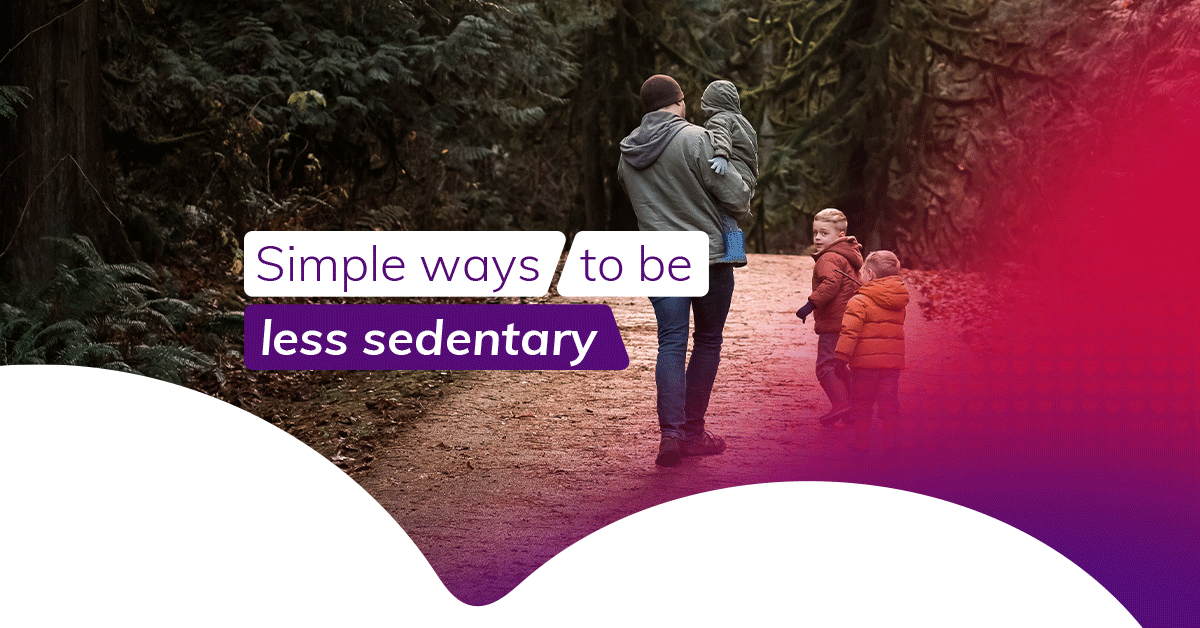

Breaking your work routine: how you can plan positive disruptions
It may sound counterintuitive but planning to break your daily routine can benefit your health. Vhi Health Coach Dr Diarmaid Fitzgerald gets into the science behind ‘positive disruptions’ and offers tips on fitting them into your workday.
It’s easy to roll your eyes when you hear an enthused call to “break the routine!”. It’s one of those things that’s easier said than done, and means nothing if it’s not personally tailored to your work-life situation. Indeed, the whole concept of “routine” is a tricky balancing act.
We often talk about getting people into a routine. It’s the reason why regularly working with a personal trainer is so useful when exercising: the responsibility to show up helps ‘good’ behaviour become engrained. On the flipside, too much routine can affect other parts of our life, as we lose flexibility and sacrifice time that we could spend recharging.
The solution, then, is to get deliberate about how and when we introduce these “disruptions” while getting the balance right to reap all the benefits.
The benefits of the right break
Doing something a bit different can give you a fresh perspective and reframe things. It allows you to be more mindful and present in the moment. When you make time for yourself, you can also start making time for others. So, it fosters greater empathy.
We also know that it has a real impact on the actual make-up of your brain. When you switch your routine up, it encourages your brain to literally start forming new connections and even neurons. The parts of the brain responsible for learning, memory, creativity and more are all activated. This is great for your brain’s “plasticity” – that mental ability to change and adapt as a result of experience. If we don’t push ourselves into uncomfortable places or try new things, we can start to lose this flexibility.
Practical things you can do
There’s a whole host of small changes you can make. If you’re already exercising, can you mix up where you’re exercising, or who you’re exercising with? Do you always go to the same place for lunch? Maybe it’s time for a change of scenery.
Imagine you’ve discovered that, on a typical Wednesday, you get very few breaks from your desk. Schedule a few minutes, throughout the day, to break out. Technology can be your friend, with apps and smart devices prompting you to get moving at scheduled intervals.
If you don’t have much free time during the day, there might be ways to get active while you achieve another objective. Walking somewhere for lunch. An opportunity for a “walking meeting”, even once a week, where you catch up with colleagues outside of standard office surroundings. In general, it’s extremely useful to team up with other people – breaking your routine is a lot more enjoyable with company. This adds enjoyment to your scheduled breaks, encouraging you to make those changes stick.
In a similar way, engaging different people in conversation is a great way to get a different perspective. That little coffee meet-up can provide the kind of variety and richness you’ve been missing – exactly what we’re talking about in terms of staying mentally flexible.
In the absence of others, why not read something new? At the very least, it’s an easy way to escape your reality for a little while. You can then return to work, refreshed and re-engaged.
Planning and reflecting on positive ‘disruptions’
If you’re still struggling to get out of a rut, a small bit of planning and self-reflection can help you introduce and stick to some of these breaks.
We know a certain amount of structure is important to reduce stress – chaos isn’t good for you! So, if you’ve time, assess your workday and track where there might be room for improvement. This can be as simple as jotting down what you get up to or noting hours of screen time. Over a few days, you’ll have a clearer view of where you’re at. What habits or behaviours are hindering you? Are there moments where you can realistically mix it up?
If that’s too much of an ask, even written sticky note reminders or smartphone prompts to take breaks can help you along. Then assess the progress you’ve made on a week-by-week basis. In this way, we can get deliberate about disruptions.
A tailored approach for real change
If you feel your schedule is overloading you or you’re at risk of burnout, breaking from that dominant routine should make a big difference. Approach your work-life the same way an athlete approaches their training and recognise the role of rest and recovery in helping you bounce back. From there, the most important thing is finding what works for you personally. That might just mean taking a step back and thinking: what specific behaviours or habits are having a negative impact on my workday?
Once you’ve got a clear picture of that, it’s far easier to know how you should mix things up. Put a plan in place that strikes the right balance between a constructive, calming routine and those ideal moments to break out of your comfort zone. After all, they do say a change is as good as a rest…
.jpg/_jcr_content/renditions/cq5dam.web.1280.1280.jpeg?ch_ck=1699631419000)
This content is for information purposes only and is not intended or implied to be a substitute for professional medical advice, diagnosis or treatment. Always seek advice from your GP or an appropriate medical professional if you have concerns about your health, or before commencing a new healthcare regime. If you believe that you are experiencing a medical emergency call 999 / 112 or seek emergency assistance immediately.
Meet our Vhi Verified Expert

